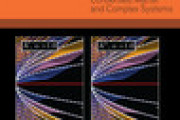 2020-09-30
2020-09-30
New research published in EPJ B reveals that the higher-than-expected efficiency of PLEDs can be reached through interactions between triplet excitons, and impurities embedded in their polymer layers.
(Image: EPJ B)
Polymer LEDs (PLEDs) are devices containing single layers of luminescent polymers, sandwiched between two metal electrodes. They produce light as the metal layers inject electrons and holes into the polymer, creating distortions which can combine to form two different types of electron-hole pair: either light-emitting ‘singlets,’ or a non-...
Continue reading →
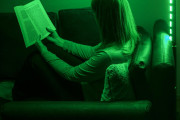 2020-09-25
2020-09-25
A new research conducted by the University of Arizona Health Sciences found that people who suffer from migraine may benefit from green light therapy, which was shown to reduce the frequency and intensity of headaches and improve patient quality of life. "This is the first clinical study to evaluate green light exposure as a potential preventive therapy for patients with migraine," said Mohab Ibrahim, an associate professor in the UArizona College of Medicine and lead of the study. (Image: The University of Arizona) During the study, patients were exposed ...
Continue reading →
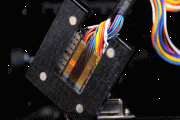 2020-08-20
2020-08-20
Perovskite LED promises higher color quality and ease of manufacture, so it is oven considered a solution to breakthrough LED applications. However, it has been known to fail when subjected to the kind of electrical current typically needed for practical uses. A research team from Princeton University has demonstrated improvement of perovskite LED in stability and performance by better managing the thermal dissipation. (Photo by Sameer A. Khan/Fotobuddy; image source: Princeton) The research, published in Advanced Materials, is titled “Thermal Management ...
Continue reading →
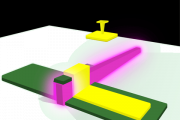 2020-08-19
2020-08-19
The National Institute of Standards and Technology (NIST) published a new article in Science Advances demonstrating a new design for LED that may overcome a long-standing limitation in the light sources' efficiency. The research team developed microscopic LEDs which achieve a dramatic increase in brightness as well as the ability to create laser light.
Consisting of scientists from the University of Maryland, Rensselaer Polytechnic Institute and the IBM Thomas J. Watson Research Center, the team achieved 100 to 1,000 times higher brightness with LEDs...
Continue reading →
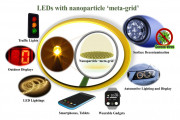 2020-08-03
2020-08-03
Improving performance of LEDs is a continuous task for researchers. A team consisting of researchers of Imperial College London introduced a method of embedding tailored meta-grid of nanoparticles to LEDs to enhance their light output and lifetime. (Image: Debabrata Sikdar, John B. Pendry, and Alexei A. Kornyshev) The method was published in Light Science & Application in July by Dr. Debabrata Sikdar, Prof. Sir John B. Pendry and Prof. Alexei Kornyshev from Imperial College London. They reported an alternative route for improving light extrac...
Continue reading →
 2020-07-23
2020-07-23
Apart from helping to improve eyesight, LED light is now used to restore hearing, according to a new study conducted by University of Göttingen, Germany.
The scientists created an optical cochlear implant based on LED lights that can safely and partially restore the sensation of hearing in deaf rats and gerbils. Their design's light-based approach allowed it to deliver more accurate and pinpointed signals to auditory nerves compared with current implants based on electricity, which often suffer from poor sound quality. The technology also offers some improvements ove...
Continue reading →
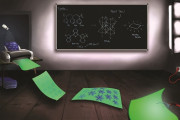 2020-06-16
2020-06-16
A team of researchers from the Helmholtz-Zentrum Berlin (HZB) and Humboldt-Universität zu Berlin has succeeded for the first time in producing LEDs from a hybrid perovskite semiconductor material using inkjet printing. This opens the door to broad application of these materials in manufacturing many different kinds of electronic components. The scientists achieved the breakthrough with the help of a trick, which was called "inoculating" (or seeding) the surface with specific crystals.
(Image: Claudia Rothkirch/HU Berlin)
Scientists at HZB have al...
Continue reading →
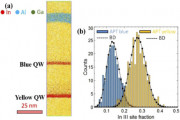 2020-06-15
2020-06-15
A new LED manufacture method which does not require phosphor to make white semipolar LED was published by a research team of UCSB with Shuji Nakamura, Nobel winner and LED pioneer, as a co-author. The result was published in Optics Express.
White light emitting LEDs are usually made from blue LEDs combining yellow phosphor. But phosphor converted white LEDs usually suffer energy loss and reduced thermal stability. Phosphor-free LEDs, however, are rather difficult to fabricate but the UCSB team proposed an easier method to achieve efficient and polari...
Continue reading →
 2020-06-11
2020-06-11
UC Santa Barbara researchers continue to push the boundaries of LED design a little further with a new method that could pave the way toward more efficient and versatile LED display and lighting technology. UCSB electrical and computer engineering professor Jonathan Schuller and collaborators describe this new approach, which could allow a wide variety of LED devices — from virtual reality headsets to automotive lighting — to become more sophisticated and sleeker at the same time. (Image: UCSB) Usually LEDs emit spontaneous light, comparing to...
Continue reading →
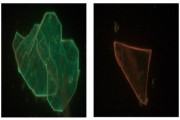 2020-05-20
2020-05-20
Some LEDs made from perovskite emit light over a broad wavelength range. To further explain the feature, scientists from the University of Groningen inspected some cases and proposed new explanation which may help other scientists to design perovskite LEDs capable of broad-range light emission. The study was published in the journal Nature Communications on May 11, 2020.
Low-dimensional (2D or 1D) perovskites emit light in a narrow spectral range and are therefore used to make LED of superior color purity. However, in some cases, a broad emission spectrum at energy le...
Continue reading →
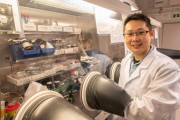 2020-04-07
2020-04-07
A research team consisting of scholars from Sweden, UK, China and the Czech has developed a perovskite LED with both high efficiency and long operational stability. The result has been published in Nature Communications, titled “Perovskite-molecule composite thin films for efficient and stable light-emitting diodes.”
Perovskites are a large family of semiconducting materials that have aroused the interest of scientists around the world. Their special crystal structure means that they have excellent optical and electronic properties, while they are both easy and ...
Continue reading →
 2020-03-16
2020-03-16
A multi-departmental research team at Taiwan’s National Chi Nan University (NCNU) collaborated with local famers and developed a LED lighting system for water bamboo (Zizania latifolia) cultivation to improve the growth with a new design of LED lenses. The advanced technology tackled the existing issues and proved to benefit the harvest. The results were published Applied Sciences in February 2020, titled “Optimized LED-Integrated Agricultural Facilities for Adjusting the Growth of Water Bamboo (Zizania latifolia).” The optimized LED...
Continue reading →
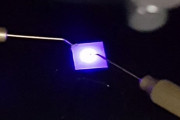 2020-03-10
2020-03-10
Researchers of the Korea Institute of Science and Technology (KIST) develop a new material for blue light emitting LEDs which can replace gallium nitride (GaN). According to the report of BusinessKorea, the new technology breakthrough might enable Korea to reduce the dependence of Japan on LED materials.
Published on Scientific Report on March 04, 2020, the study titled “Intrinsically p-type cuprous iodide semiconductor for hybrid light emitting diodes,” demonstrate the single crystal epitaxy of cuprous iodide (CuI) film grown on Si and sapphire s...
Continue reading →
 2020-02-06
2020-02-06
Several studies have indicated that flickering light can help to cure Alzheimer disease. A new study published by researchers at Georgia Institute of Technology and Emory University further identifies how the flickering light works. The researchers found that the exposure to light pulsing at 40 hertz – 40 beats per second – causes brains to release a surge of signaling chemicals that may help fight the disease. The new finding was published in the Journal of Neurosceince on February 5, 2020.
In 2016, flickering light was first linked with Alzheimer disease with ...
Continue reading →
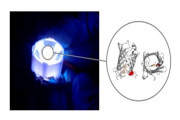 2020-02-04
2020-02-04
An EU funded project, named ENABLED, is working on creating LEDs with artificial fluorescent proteins to make the lighting source more sustainable.
Currently, LED lamps consist of a blue-emitting chip and an optical filter made of inorganic phosphors, rare earth minerals that transforms blue light into the white light. This filter does not efficiently convert blue light, causing serious implications on visual acuity in children and sleep disorder in adults. Moreover, inorganic phosphors are quite scarce and are listed as one of the 27 critical raw materials by the Euro...
Continue reading →
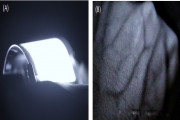 2019-12-30
2019-12-30
Researchers at National University of Singapore (NUS) developed highly efficient, large-area and flexible near-infrared LEDs for new wearable device technologies.
A research team led by Prof TAN Zhi Kuang from the Department of Chemistry and the Solar Energy Research Institute of Singapore (SERIS), NUS has developed high-efficiency near-infrared LEDs which can cover an area of 900 mm2 using low-cost solution-processing methods. The result was published on Nature Photonics on December 2, 2019.
According to the research, the flexible near-infrared ...
Continue reading →
 2019-10-15
2019-10-15
City College of New York (CCNY) announced their research breakthroughs in the realm of photonics, the researchers successfully demonstrated an LED based on half-light half-matter quasiparticles in atomically thin materials. According to CCNY, this is also the first successful test of an electrically driven light emitter using atomically thin semiconductors embedded in a light trapping structure.
(Schematic of a half-light- half-matter quasiparticle based LED developed in Vinod Menon's group using atomically thin materials.
Image credit: Visakh Menon)
The ...
Continue reading →
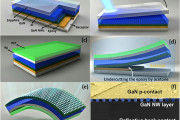 2019-09-11
2019-09-11
After publishing the research paper demonstrating Micro LED integration with amorphous silicon TFTs, the research team from the University of Waterloo in Canada further revealed its approach of transferring InGaN nanowire LEDs on flexible substrate without degrading optical performance of the LEDs when the substrate bends.
Researchers use vertical GaN nanowire LEDs to separate the electrically active region of the LEDs from the bending platform. LEDs are transferred onto flexible polyethylene terephthalate (PET) with a “paste and cut” process...
Continue reading →
 2019-07-24
2019-07-24
LEDs can be lit on by urine without electricity! A Japanese professor developed a fuel cell which can be powered by urea, a component of urine, to light up LEDs. The approach would offer light source when being in places without electricity such as in the mountains or in times of disaster. The Japan News reported that Keiichi Kaneto, a visiting professor at the Osaka Institute of Technology, created an electricity generable sheet which contains an alloy of copper and nickel and was coated by resin. The sheep reacted to urine drops and could then illuminate a small blue L...
Continue reading →
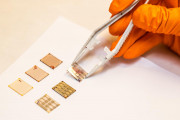 2019-07-18
2019-07-18
Scientists at Linkoping University working with colleagues from China have shown how to achieve efficient perovskite LEDs. In an article published in Nature Communications, they provide guidelines on fabricating high-quality perovskite light emitters for high-efficiency perovskite LEDs.
Since solution-processed perovskites contain large amounts of defects, which are mostly halide vacancies, efficient control of the perovskite crystallinity is required for high-performance optoelectronic devices. The research group at LiU, under the leadership of Senior Lecturer Feng G...
Continue reading →
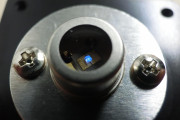 2019-07-10
2019-07-10
AlGaN-based DUV-LEDs are receiving much research attention due to their potential use in sterilization, water purification, phototherapy, and sunlight-independent high-speed optical communication. Scientists are investigating ways to improve their efficiency in converting electrical energy into optical energy.
Deep UV LEDs made from AlGaN efficiently transfer electrical energy to optical energy due to the growth of one of its bottom layers in a step-like fashion. This finding, published in the journal Applied Physics Letters, can lead to the development of even more...
Continue reading →
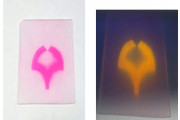 2019-06-14
2019-06-14
Using LED as a light source, researchers at Osaka University have now developed a convenient light-driven process for oxidizing polypropylene (PP) without harmful waste.
The research team used radicals to make the plastic react. Scholars chose an LED lamp as the light source photo-chemically activate radicals for breaking down the chemical bonds which make plastic unreactive and hard to decompose.
"In applications like printing and medical materials, plastics must be surface-modified," explained Tsuyoshi Inoue, co-author of the study. "Oxidizing C-H bo...
Continue reading →
 2019-04-29
2019-04-29
Superinjection is a physical effect that underlies modern LEDs and lasers and was believed to occur only in semiconductor heterostructures in the past. Recently, researchers from the Moscow Institute of Physics and Technology (MIPT) have found that the effect can also occur in homostructures, which opens up new prospects for the development of light sources.
In the 1960’s, Zhores Alferov and Herbert Kroemer proposed to use heterostructures, which consist of two or more complementary semiconductors to generate wider bandgaps, enabling the concentration of electrons ...
Continue reading →
 2019-04-25
2019-04-25
A research team at the University of Innsbruck, Austria cooperated with Osram Opto Semiconductors to develop a new red phosphor with excellent luminescence properties which can make LED lighting more energy-efficient. The research article, titled “Sr[Li2Al2O2N2]:Eu2+—A high performance red phosphor to brighten the future” was published in Nature Communications on April 23, 2019.
The scientists created the new red phosphor whose light is well perceived by the eye as the human eye is more sensitive to green and less sensitive to blue and red. With th...
Continue reading →
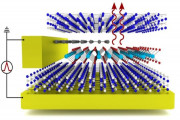 2019-04-16
2019-04-16
A research team at Vienna University of Technology (TU Wien) developed a new kind of LED which generates light from the radiative decay of exciton complexes in extremely thin layers. Researchers produced what they called as “multi-particle exciton complexes” by applying electrical pulses to extremely thin layers of material made from tungsten and selenium or sulphur. These exciton clusters are bonding states made up of electrons and “holes” in the material and can be converted into light. The result is an innovative form of light-emitting diode in whic...
Continue reading →
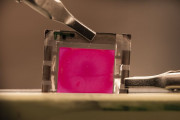 2019-04-12
2019-04-12
An international research team has developed near-infrared (NIR) LED based on perovskite in a laboratory at Linköping University in Sweden which achieve a record external quantum efficiency of 21.6 percent Perovskites have good light-emitting properties and are easy to manufacture. However, the external quantum efficiency of perovskite-based LED has until now been limited due to defects that arise in the material during manufacture. The defects act as traps for the charge carriers and thus cause energy losses. (Image: Linköping University) To solve the ...
Continue reading →
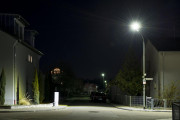 2019-04-10
2019-04-10
Researchers of Karlsruhe Institute of Technology (KIT) in Germany have developed a novel, even more economical LED street light by replacing conventional high-performance LED with a special array of weaker LEDs. The new approach succeeded in reducing power consumption by 20 percent.
Michael Heidinger at KIT's Light Technology Institute (LTI) designed a smart circuit that compensates aging and failure of individual LEDs. With the new approach, it is possible to install a large number of LEDs on a single board at low cost. Moreover, the LEDs incre...
Continue reading →
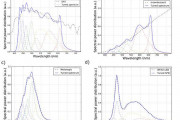 2019-04-01
2019-04-01
For keeping the quality and effect of tunable LED lighting used in human centric lighting applications, a new research proposed novel methods to overcome the challenges of temperature change and lumen decay of LEDs. The research team demonstrated a system to maintain consistency and stability of LED light source over an extended period of time. Featured with tunable color temperature and spectrum, LED has been increasingly adopted in the developing human centric lighting applications in medical, educational and working environment for improving human well-being. Some of th...
Continue reading →
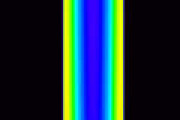 2019-03-22
2019-03-22
A research team at National Institute of Standards and Technology (NIST) has developed nanowire UV LEDs that are able to produce five times higher light intensity based on a simpler shell design.
UV LEDs are used in a growing number of applications such as polymer curing, water purification and medical disinfection. Researchers at NIST have been trying to make nanowire-based LEDs for scanning-probe tips intended for electronics and biology applications. Lately, researchers have been experimenting with nanowire cores made of silicon-doped GaN, which has extra ...
Continue reading →
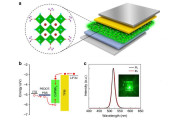 2019-02-23
2019-02-23
In order to improve the efficiency and lighting quality of LEDs, metal halide perovskites have been considered as a next generation material. Perovskite LEDs (PeLEDs) as emerging light-emitting technology have attracted attentions with the advantages of low manufacturing cost, high light quality and energy efficiency. A research co-led by the scientists from City University of Hong Kong (CityU) and Shanghai University developed a new manufacturing process to enhance optical properties and stability of perovskite LEDs.
The research team used cesium trifluoroacetate...
Continue reading →
 2020-09-30
2020-09-30
 2020-09-25
2020-09-25
 2020-08-20
2020-08-20
 2020-08-19
2020-08-19
 2020-08-03
2020-08-03
 2020-07-23
2020-07-23
 2020-06-16
2020-06-16
 2020-06-15
2020-06-15
 2020-06-11
2020-06-11
 2020-05-20
2020-05-20
 2020-04-07
2020-04-07
 2020-03-16
2020-03-16
 2020-03-10
2020-03-10
 2020-02-06
2020-02-06
 2020-02-04
2020-02-04
 2019-12-30
2019-12-30
 2019-10-15
2019-10-15
 2019-09-11
2019-09-11
 2019-07-24
2019-07-24
 2019-07-18
2019-07-18
 2019-07-10
2019-07-10
 2019-06-14
2019-06-14
 2019-04-29
2019-04-29
 2019-04-25
2019-04-25
 2019-04-16
2019-04-16
 2019-04-12
2019-04-12
 2019-04-10
2019-04-10
 2019-04-01
2019-04-01
 2019-03-22
2019-03-22
 2019-02-23
2019-02-23